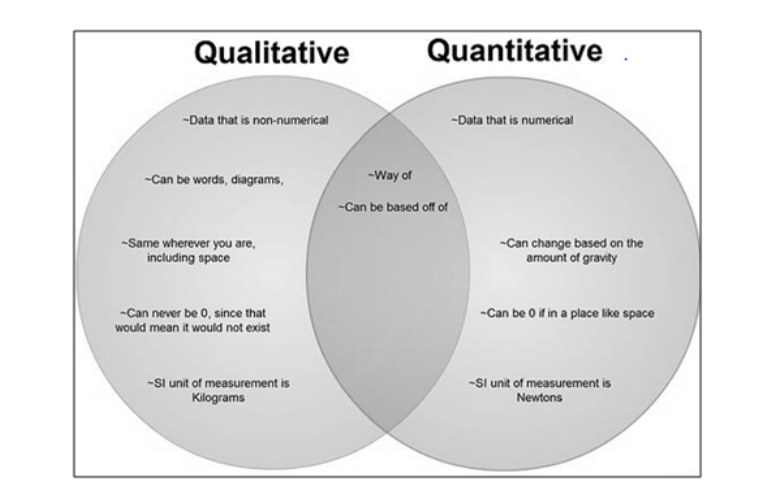Qualitative and quantitative data differ in their nature, characteristics, and how they are collected, analyzed, and used in research and analysis.
Here are the key Differences Between Qualitative and Quantitative Data, along with examples for each:
Qualitative Data:
-
Nature:
- Qualitative data is descriptive and non-numeric in nature.
- It deals with attributes, characteristics, and qualities that can be categorized and described.
-
Examples of Qualitative Data:
- Color: Describing the color of cars (e.g., "red," "blue," "green").
- Opinions: Collecting feedback from customers about a product (e.g., "satisfied," "dissatisfied").
- Behavior: Observing and describing people's behavior in a social setting (e.g., "friendly," "introverted").
- Mood: Identifying and characterizing the emotional state of individuals (e.g., "happy," "anxious").
- Taste: Describing the taste of food (e.g., "spicy," "sour").
-
Data Collection Methods:
- Qualitative data is often collected through methods such as interviews, observations, open-ended surveys, and content analysis.
- It involves gathering textual or visual information and categorizing it based on themes or attributes.
-
Analysis Approach:
- Qualitative data is analyzed by identifying patterns, themes, and commonalities in the data.
- Qualitative analysis techniques include content analysis, thematic analysis, and narrative analysis.
-
Use in Research:
- Qualitative data is commonly used in social sciences, humanities, and areas where subjective experiences, behaviors, and perceptions are of interest.
- It provides in-depth insights and can help generate hypotheses for further research.
Quantitative Data:
-
Nature:
- Quantitative data is numerical and measurable, often represented as numbers.
- It deals with quantities, amounts, and attributes that can be counted, measured, and analyzed statistically.
-
Examples of Quantitative Data:
- Age: Recording the ages of a group of individuals (e.g., 25 years, 40 years).
- Temperature: Measuring the temperature in degrees Celsius (e.g., 25°C, 30°C).
- Income: Collecting income data in dollars (e.g., $50,000, $75,000).
- Number of Products Sold: Counting the number of products sold (e.g., 100 units, 500 units).
- Test Scores: Recording test scores (e.g., 85 out of 100).
-
Data Collection Methods:
- Quantitative data is collected using methods such as surveys, experiments, sensors, and structured observations.
- It typically involves precise measurements and standardized questionnaires.
-
Analysis Approach:
- Quantitative data is analyzed using statistical methods, including descriptive statistics (e.g., mean, median) and inferential statistics (e.g., t-tests, regression analysis).
- It aims to quantify relationships and make statistical inferences.
-
Use in Research:
- Quantitative data is widely used in natural sciences, social sciences, economics, and fields where data must be quantified and analyzed objectively.
- It supports statistical hypothesis testing and generalization to larger populations.
In summary, the main difference between qualitative and quantitative data lies in their nature and how they are collected and analyzed. Qualitative data is descriptive and non-numeric, while quantitative data is numerical and measured. The choice between the two types of data depends on the research objectives and the type of information being sought. In some cases, a combination of both data types can provide a comprehensive understanding of a research topic.
Thank you.
